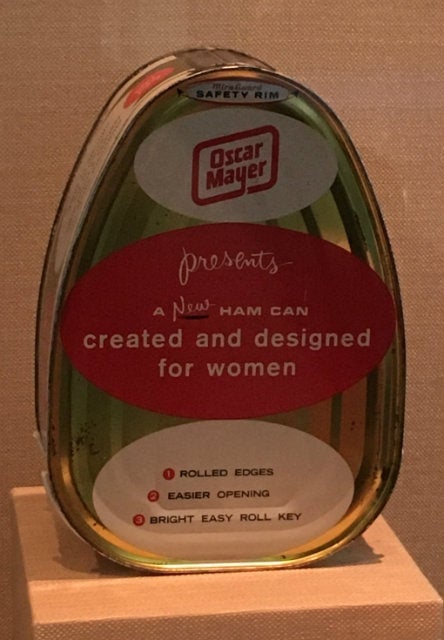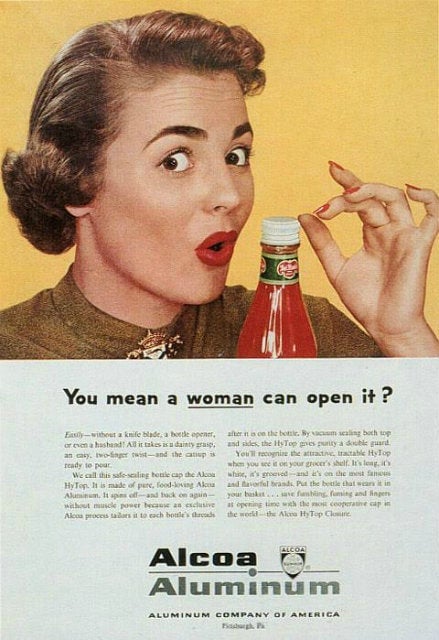Before there was Bic for Her, there was the Oscar Mayer ham can for women
Before there was Bic for Her, before there was tape Just For Girls, before there was a whole bunch of stuff that absolutely, definitely does not need to be made just for ladies, there was the Oscar Mayer ham can for women.


Before there was Bic for Her, before there was tape Just For Girls, before there was a whole bunch of stuff that absolutely, definitely does not need to be made just for ladies, there was the Oscar Mayer ham can for women.

Produced around 1960, the can features a MiraGuard safety rim and a “bright easy roll key.” No statistics on US ham can-related injuries prior to the introduction of the MiraGuard safety rim are available; however, women’s difficulties opening containers was a common feature in midcentury advertising.
The product is part of the exhibit “A Modern Approach: Mid-Century Design” at the SFO Museum at San Francisco International Airport, and it caught this reporter’s eye on a recent business trip. Having grown up in a time of unprecedented gender parity in processed-meat packaging, I was curious to know more about a time when women could not be trusted with regular ham cans. What makes a ham can for women a ham can for women? And why on God’s cured, salted earth was such a thing ever considered necessary?
The can was likely a promotional product created for grocers and other retailers marketing Oscar Mayer ham to female shoppers, according to Scott A. Morris, associate professor of food and packaging engineering at University of Illinois at Urbana-Champaign. Assistant SFO Museum curator Daniel Calderon concurs, noting that the can on display contains no ham. (Quartz contacted Oscar Mayer about the history of its ham cans; the company has not responded.)
The reason for the gender-specific marketing approach was almost certainly not because anyone at Oscar Mayer thought women couldn’t open ham cans, but because, at the time, nobody but women opened cans of ham. Then, as now, women did the majority of most families’ shopping and cooking, a fact of which marketers were well aware. When Betty Friedan published The Feminine Mystique in 1963, 75% of consumer advertising budgets in the US were aimed at women.
The Oscar Mayer ham can for women was part of a bigger push by US businesses to replace the lucrative government contracts of World War II with consumer spending. It was the job of Mad Men-era executives to convince US women (especially white, middle-class ones) that the purchase of modern consumer goods could make them better homemakers, better women, and better Americans.

Convenience was everything, says Marilyn Morgan, a University of Massachusetts-Boston history professor who specializes in gender, food, and culture. Marketers found that women responded particularly well to products that promised to save time. This gave US companies a challenge they took on with gusto: to create and sell consumer goods that saved women time, but not so much time that women would pursue outside interests and no longer buy consumer goods.
To succeed, product marketing should “emphasize [a woman’s] kingpin role in the family…make housework a matter of knowledge and skill, rather than a matter of brawn and dull, unremitting effort,” wrote the Institute for Motivational Research in a 1945 report Friedan quoted. The consumer research firm advised marketers to pay particular attention to women who “look forward to new products which not only decrease their daily work load, but actually engage their emotional and intellectual interest in the world of scientific development outside the home”—such as the latest advances in ham canning.